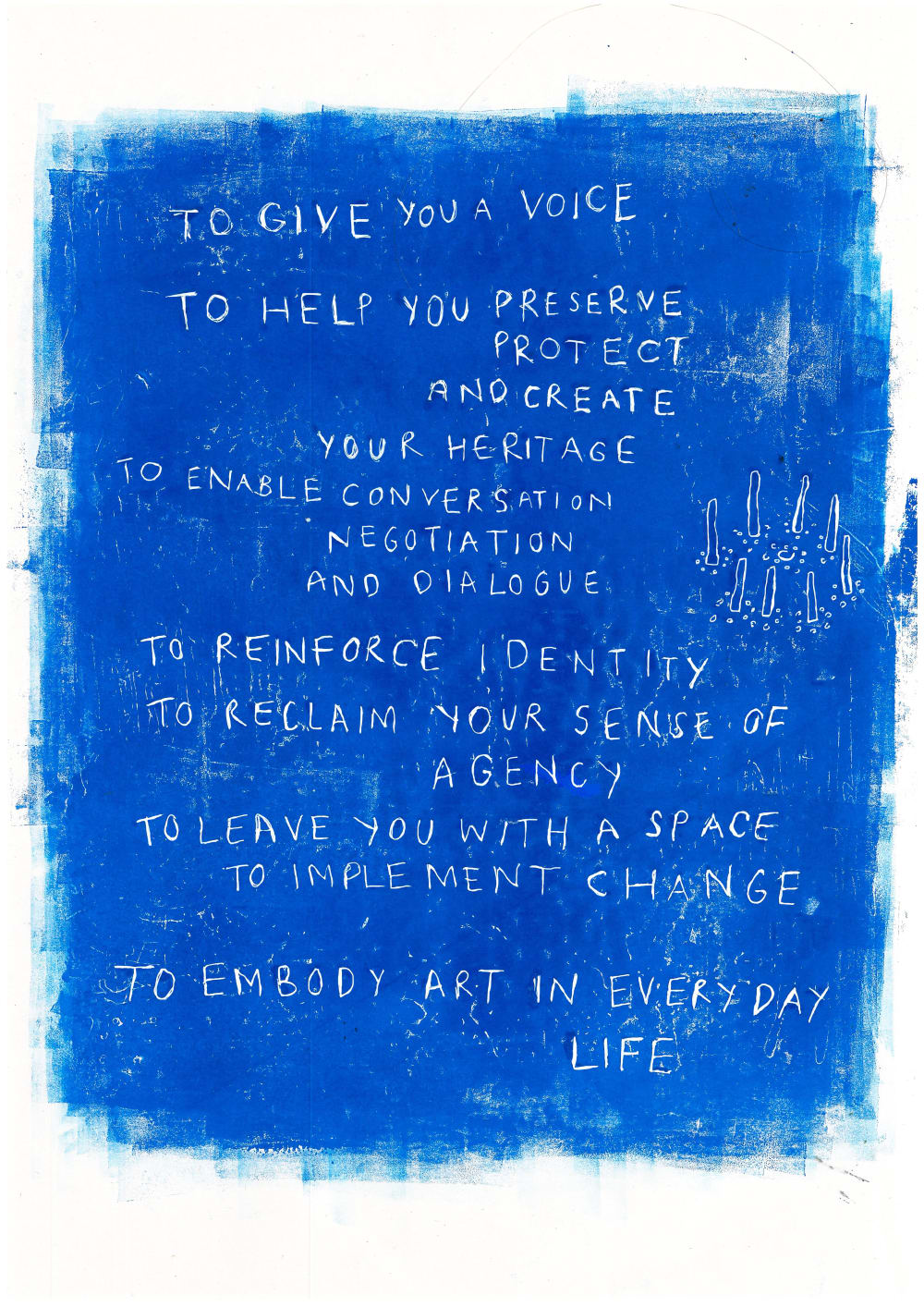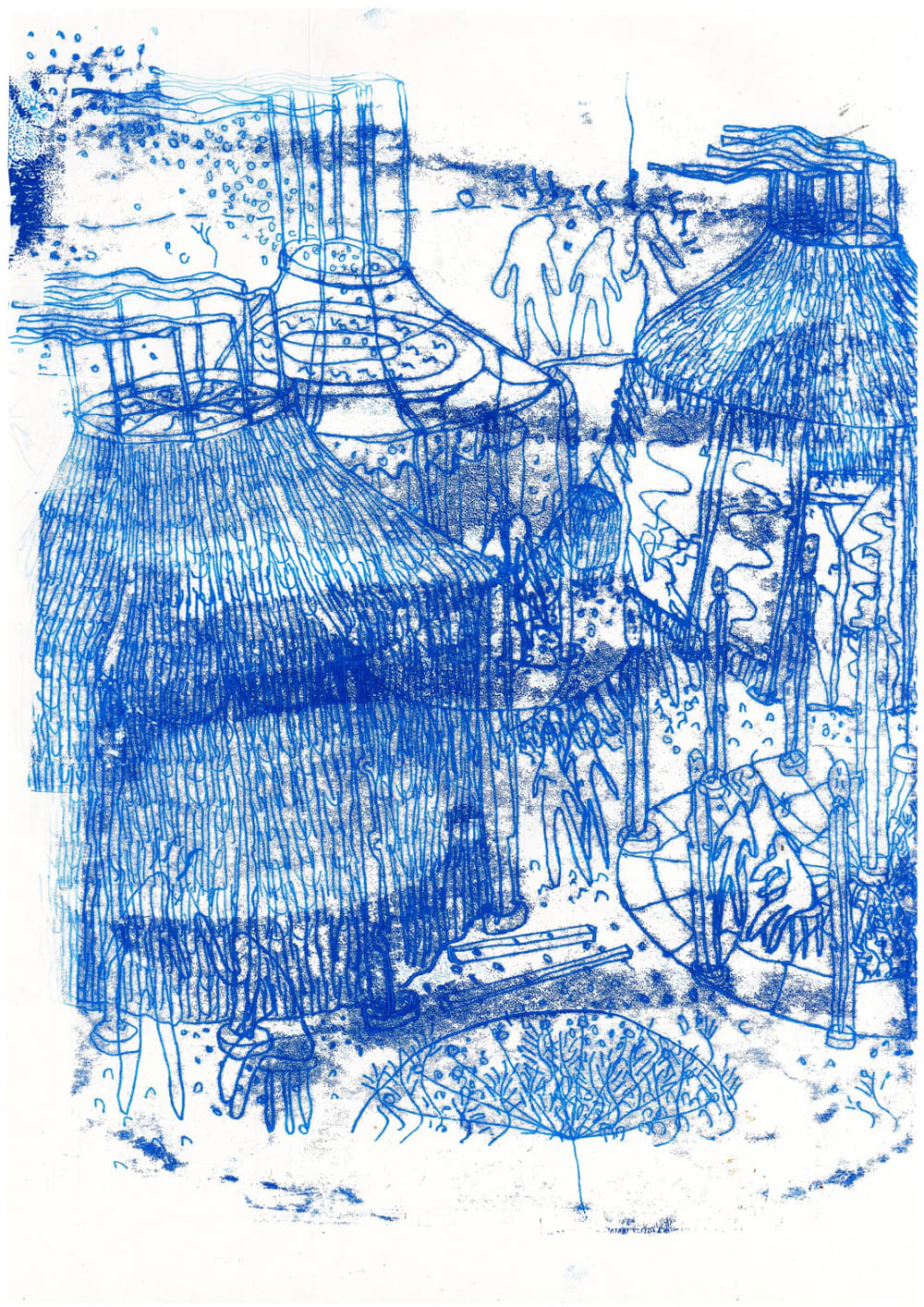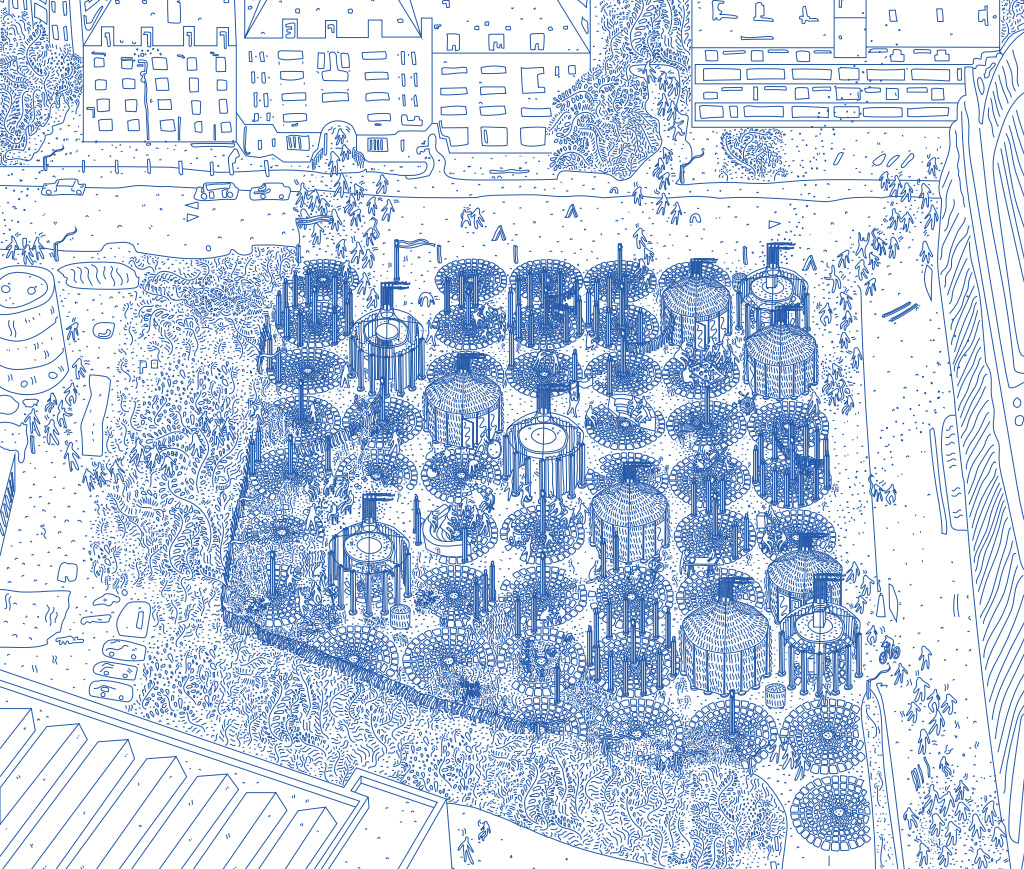On show in Designing in Turbulent Times at the Lethaby Gallery, Holly Le-Var's Centre for Civic Festivity explores how architecture can bring agency to a community. We talk to the recent BA Architecture graduate about the role of architects in creating connections between community and place.

The Centre for Civic Festivity, Holly Le-Var, BA Architecture
Due to ongoing developments in King's Cross and Euston, the Somers Town London district has become sandwiched in a state of neglect. The Centre for Civic Festivity explores how architecture can give agency back to its long-term residents. The design is inspired by sculptor Gilbert Bayes’s Laundry Circle. The typology of the project is defined by a collection of open-source meeting and hosting activities. These are informed by local annual celebrations and interspersed with fleeting moments of spontaneity and making.
What was the experience that sparked your research?
"My passion for people-orientated architecture stems from my childhood experience in a geographically changeable but close-knit military community. Constantly moving and having to establish roots has, until recently, been a part of my family's life for as long as I can remember... each place turned into a new set of dynamics to construct a home around. Watching my parents immerse themselves in local groups and organisations became a precedent and embedded philosophy for the way I approach the idea of 'community'.
My three years at Central Saint Martins further consolidated these ideas: in 2017, I worked in Canvey Island, Essex for three months on a local engagement project; in both 2018 and 2019 I spent two weeks at Roskilde, Denmark researching festival community culture; and finally, I spent a week in the suburban district of Kamoi, Tokyo exploring the unifying role of dogs in public infrastructure.
All these weird and wonderful travels allowed me to observe the overflowing benefits of dialogue, conversation, disagreement and democracy in all aspects of human interaction.
For me, the architect's role is about facilitation and support, not a projection of personal motives or egotistic daydreams. This is why I so adamantly chose to consult the radical people of Somers Town for the duration of my third-year project, which stemmed from discussions with Nicole Van den Eijnde (Global Generation/The Skip Garden) and Diana Foster (Somers Town History Club). In January, I assisted various events from an organised History Walk and Gilbert Bayes film screening to a ceramics workshop with fellow student Ewelina Bartkowska. Through this, I became conscious of the collective incentives within the community to establish a more rooted local framework. The popularity of these gatherings was overwhelming – it was so humbling to observe all ages, nationalities and backgrounds arriving with a heartfelt sense of purpose within the discussion. So I began to question how a typology of civic architecture can demand agency in an area undergoing such deep-rooted, permanent change."

Do you think of yourself as a sustainable designer?
"Yes! Whole-heartedly in intent, but I'm still working on the theory.
Firstly, I think it really depends on what you mean by the term... Its use has morphed from one intangible translation to another, becoming increasingly detached from any clear meaning. The etymology suggests a definition of ‘cohesion’ or ‘a system being upheld’ with opportunities for 'reuse or continued manifestation'.
So in lots of ways, I believe the act of being sustainable should not only fall into the way one designs, but also the way in which one conducts their daily life. Being sustainable for me really translates as being ‘conscious', a mindset which trickles into many facets of every-day being.
How we wake up, how we travel, how we move, how we consume, how we interact, how we sleep... ‘Sustainability’ can be an empty slogan or a mask that we wear, but true longevity requires whole awareness and attention in not just the story we project, but more importantly in the reality we cultivate.
As well as creating systems that last, there should also be scope for change that fulfil levels of flexible yet morally-grounded criteria. As I delve into wider contexts, my role as a sustainable designer is increasingly becoming defined not only by my western surroundings but by the manner in which it serves and is perceived by multiple cultures across the world. In many respects, I will constantly be in the process of finding my own way towards an authentic and well-rounded version of sustainability, if that exists."
What is the role of designers in society's collective push for a more sustainable way to live?
"To be fact-finders – always searching for and projecting truth amidst a society of mass censorship and ill-sourced information.
To be present – to breathe, reflect and respond to surroundings with composure and consciousness.
To be teachers – always developing pedagogy alongside theory, training ourselves to not only absorb knowledge but impart it in creative, effective and alternative ways.
To be diplomats – patient and comfortable with compromise, dialogue, disagreement, tension and at peace with the unpredictable nature of human beings.
But finally, to be activists – transforming sustainability into a non-negotiable goal."
See Holly Le-Var's work in Designing in Turbulent Times, a Central Saint Martins, LVMH and Maison/0 exhibition at the Lethaby Gallery, 14 September – 27 October.



